The great beyond
This amazing garden - part of a 4000ha property in WA’s Great Southern district - has been one couple’s 34-year labour of love.
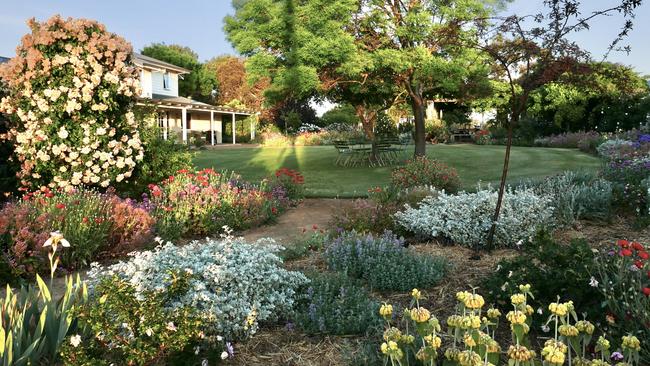
Cathy Wright and her husband Eric “Lefty” Wright have been gardening together at their property in Kojunup for 34 years. Set in the rolling country of the Great Southern district about three hours south-east of Perth, the 4000ha grazing and cropping property is called Pine Avenue for the stately maritime pines that line the driveway. It’s been Eric’s home since he was a boy.
The now-retired couple moved into the house and garden, established by Eric’s mother Olive, when they married in 1988. Cathy learned from Olive, a talented plantswoman, and from her own garden-loving mother but has gone on to become a rose expert in her own right. She was instrumental in developing the Rose Maze at nearby Kodja Place, a cultural centre housing museum, galleries and visitor centre.
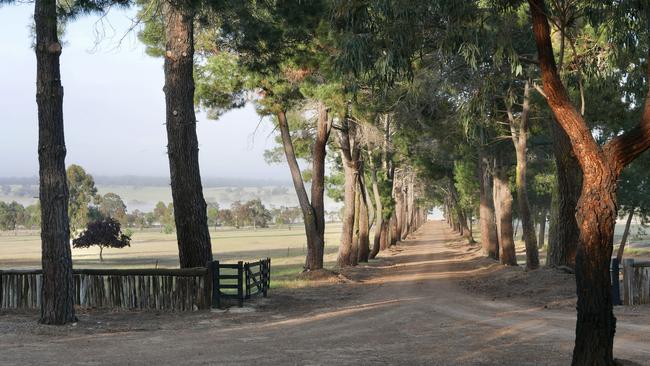
An early project that transformed the garden was the construction of a generous lawn terrace bordered by a ha-ha – a sunken retaining wall to keep stock out while preserving an uninterrupted view across the landscape. This linking of garden to landscape is one of the great features of the garden, giving it a strong sense of place.
The structural work is all Eric’s, including the waist-high, curved stone walls that define the garden entry, built with rocks gathered from the property, and the characterful fences of recycled timber “jam posts”. The timber of local jam wattles (Acacia acuminata) is durable and resistant to white ants, ideal for fencing. During the lockdown Eric extended the ha-ha and built more stone walls, having stone and energy in abundance. “The walls transform the garden by giving it strong bones and more elegance,” says Cathy.
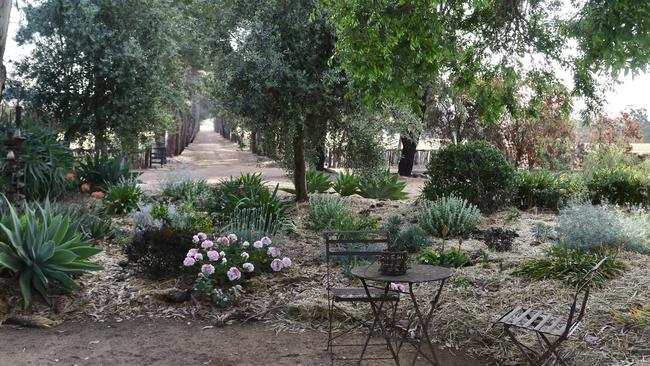
There have been many changes over the decades. “Initially it was a cottage garden, which was all the rage in the ’90s,” Cathy says. “Then I moved heavily towards succulents, then we paused a bit in the early 2000s and now I’m back into it. I pulled out a lot of the roses that weren’t doing well but I’ve found rugosa roses do very well here because the parrots don’t eat them.” She has planted David Austin roses closer to the house and some heritage roses, plus a magnificent ‘Crepuscule’ climbing rose covering a long pergola, again built by Eric.
“In recent years the trees have grown, which we love as shade is so important here, but it changes everything – you garden differently,” says Cathy. “We’ve just ripped out an old garden under a beautiful golden ash and put gravel down with a few plants in it and it looks wonderful. I’m discovering that space in your garden is essential so the plants that are there can show their features better.”
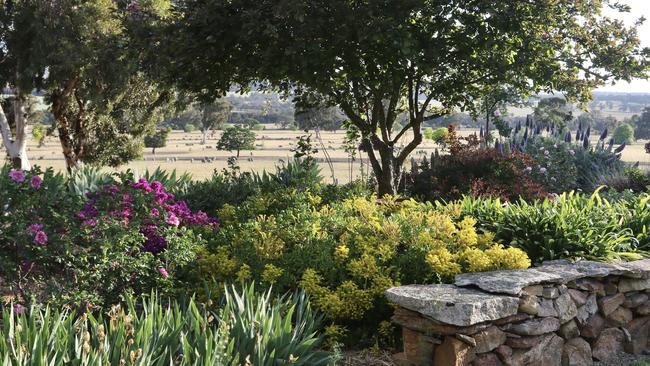
She is planting fewer perennials and more shrubs such as Westringia ‘Grey Box’, Teucrium and Ballota pseudodictamnus that she can trim into gentle mounds, and grasses such as Pennisetum ‘Rubrum’. Under deciduous trees she’s adding massed daffodils and bluebells for spring colour.
Their vegetable beds and orchard (“Lefty is the boss of those,” laughs Cathy) produce more than they can consume fresh, preserve and freeze.
Despite covering more than a hectare, the garden doesn’t require constant attention and the couple both have a variety of other interests. “We do intense bits when there’s a project on,” says Eric. “There’s no holding Cathy back then.”
The garden will be open October 29-30 as part of the Bloom Festival; greatsoutherntreasures.com.au kodjaplace.com.au
Q&A
I recently bought a mid-century home. Could you suggest some plants for the garden to reflect that era? Luke Pepping, Gippsland, Vic
The ideal book for you is The Mid-Century Modern Garden by Ethne Clarke, which covers design, materials and plants. The planting character of that style exploits dramatic contrasts in foliage size, shape and colour. Succulents, cacti and other plants from semi-arid regions mix with clumping grasses and groundcovers. Hero plants include candelabra cactus (Euphorbia ingens), tree aloe (Aloidendron barberae), dragon’s blood tree (Dracaena draco), elephants’ tusks (Sansevieria stuckyi) and pygmy date palm (Phoenix roebelenii).
Possums strip our lillypilly hedge. What is a fast-growing alternative for screening? Felicity Scott, Melbourne
The few good hedging plants that possums don’t eat include Viburnum suspensum, Viburnum odoratissimum ‘Dense Fence’, Murraya and Elaeagnus. They also avoid bamboo and conifers.
My mother used tea leaves around her roses. Is this beneficial to other plants as well? John Scott, Perth
Black tea leaves are a source of organic matter and are slightly acidic. They contain 3-4 per cent nitrogen and 0.1-0.2 per cent of both phosphorus and potassium. That’s a comparatively high level of nitrogen, which promotes leafy growth. Roses also need high phosphorus and potassium in a balanced NPK fertiliser. Other elements in tea include aluminium, fluorine and manganese, which potentially could harm plants in large amounts. You can use tea leaves on any plants in small doses or add them to the compost.
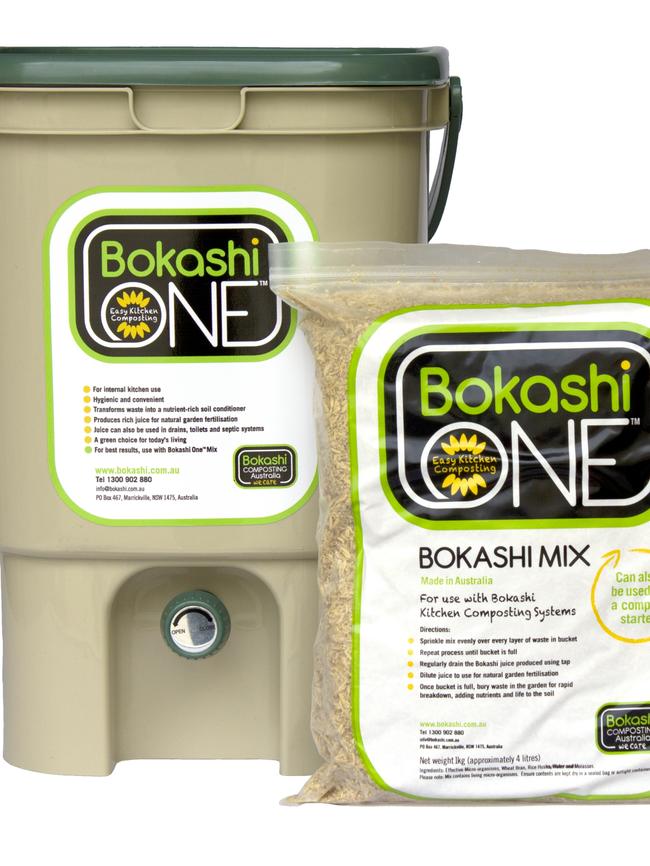
Send your questions to: helenyoungtwig@gmail.com or Helen Young, PO Box 3098, Willoughby North, NSW 2068. Website: helenyoung.com.au. The best question for April wins a Bokashi One Starter Pack worth $196 for hygienic composting in the kitchen, containing two buckets and 2kg of mix; bokashi.com.au




To join the conversation, please log in. Don't have an account? Register
Join the conversation, you are commenting as Logout